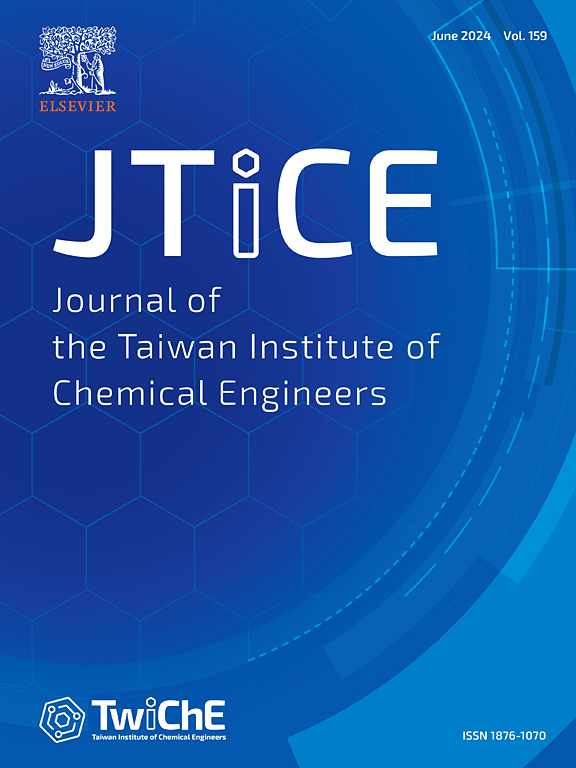Influence of sulfurization treatments on electrochemical performances of spherical-like NiO/Rod-like Co3O4 electrocatalysts on air-cathodes of rechargeable Zn-metal/air energy storage system
IF 5.5
3区 工程技术
Q1 ENGINEERING, CHEMICAL
Journal of the Taiwan Institute of Chemical Engineers
Pub Date : 2025-01-06
DOI:10.1016/j.jtice.2024.105924
引用次数: 0
Abstract
Background
Renewable energy is an interesting way to decrease the influence of global warming effect but unstable energy output is the key problem that has to be overcome. To develop an energy storage system is thus an important way for industrial application.
Methods
Powders of spherical-like nickel oxide (NiO)/rod-like tri-cobalt tetra-oxide (Co3O4) were obtained using co-precipitation method and then elemental sulphur was doping into samples under sulfurization process. These S-doped samples attached onto carbon powders were coated onto Ni-foams as air-cathodes of our homemade Zn-metal/air energy storage systems for further tests.
Significant findings
The samples showed lower XRD peak intensities and uniform S element distribution in S-incorporated NiO/Co3O4 electrocatalysts with an increase in S-doping ratio after sulfurization. Sample with S content of 2.09 % on air-cathode in our homemade battery showed the best electrochemical performance, which exhibited the lowest charge/discharge voltage difference value of 0.73–0.76 V and specific energy capacity of around 766.71 mA-h/g-Zn at constant discharge current density of 10 mA/cm2. In the electrochemical impedance spectra of samples, high carrier concentration and low charge transfer resistance of the sample with S content of 2.09 % made it have the best electrochemical performance and stability in electrolyte.

求助全文
约1分钟内获得全文
求助全文
来源期刊
CiteScore
9.10
自引率
14.00%
发文量
362
审稿时长
35 days
期刊介绍:
Journal of the Taiwan Institute of Chemical Engineers (formerly known as Journal of the Chinese Institute of Chemical Engineers) publishes original works, from fundamental principles to practical applications, in the broad field of chemical engineering with special focus on three aspects: Chemical and Biomolecular Science and Technology, Energy and Environmental Science and Technology, and Materials Science and Technology. Authors should choose for their manuscript an appropriate aspect section and a few related classifications when submitting to the journal online.

 求助内容:
求助内容: 应助结果提醒方式:
应助结果提醒方式:


